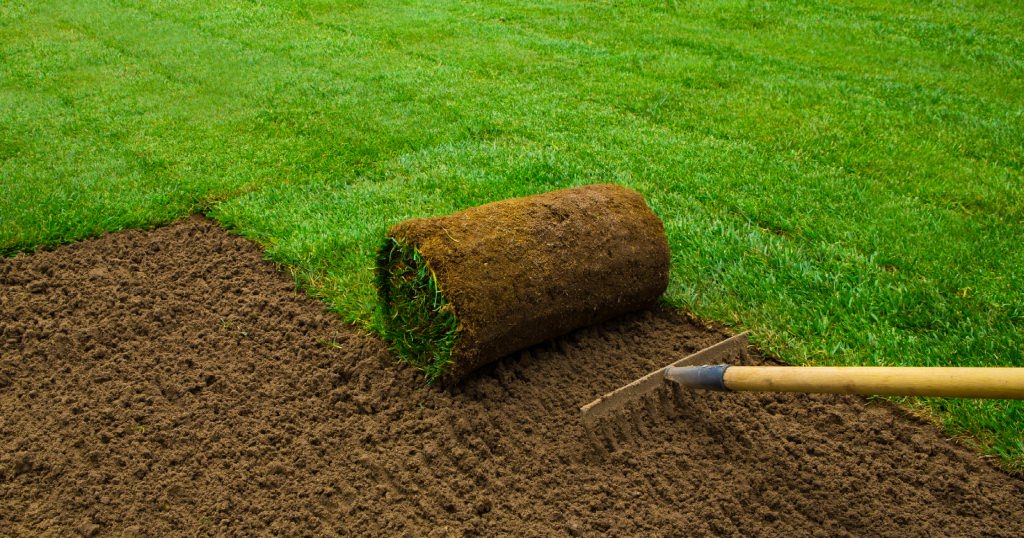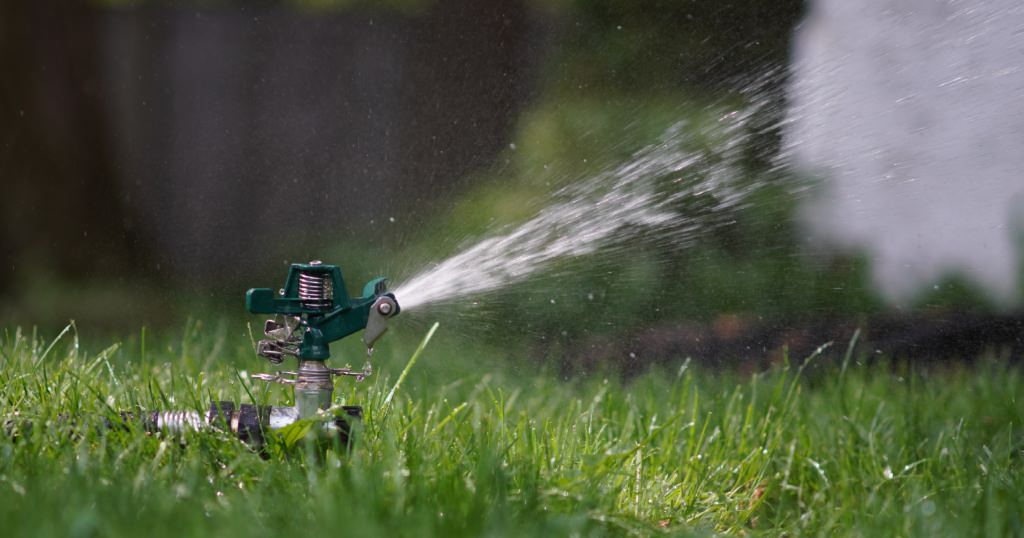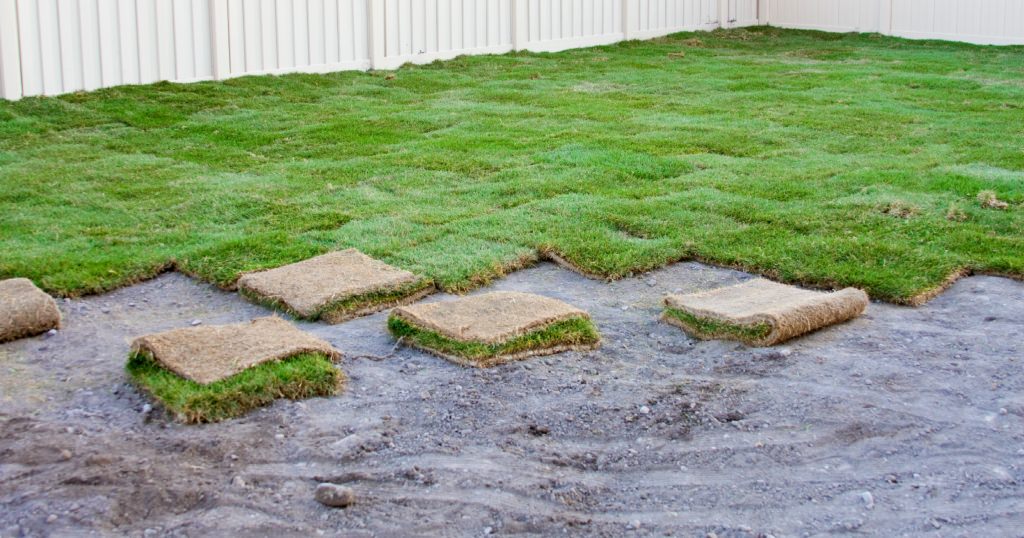
Congratulations, you’re a first time owner of a new sod lawn. With proper care and routine maintenance, those deep green grass blades will be the envy of your neighborhood. We’ve come up with tips the pros use for the best results of keeping a beautiful green lawn for years to come. An established lawn isn’t created overnight, but you can decrease the time needed with a sod installation. Just know it’s a good idea for the sod to get enough water before the first mowing.
Now let’s get down to the business of maintaining your new natural green carpet.
How much water should your new grass get?

The most important thing your new lawn needs is water. The newly installed lawn should be watered immediately upon installation no matter the time of year. If possible, for people who have irrigation, install the new sod by the zone areas so you can turn on the irrigation immediately after it has been installed. You can also use the garden hose and sprinkler set up to water in sections. I highly recommend investing in an irrigation system. This will ensure equal water distribution throughout the lawn making your life a lot easier rather than lugging hoses and sprinklers around all the time.
The amount of water your new lawn receives is critical. What is the frequency of watering and how do I measure the amount of water being spread about? Lawn and garden centers sell inexpensive measuring tools you can put throughout your yard to gauge the amount of water being distributed. You can also mark a can with a sharpie in quarter-inch segments from the bottom up and place it on your new lawn as a measuring device. Once the sod is installed, you will want to apply 1 to 2 inches of water saturating the soil a few inches deep. Peel back a few rolls of sod throughout to check for water distribution quantity, depth, and consistency.
The first couple of weeks is most important regarding water, so a schedule should be established. During the first week watering a quarter inch twice daily preferably in the morning and late afternoon is the goal. This produces strong new white feeder grass roots, creating sod viability and longevity. You will now see the new strong roots growing and knitting into the soil.
During the second week, begin your day in the morning watering cutting down the application time to a half inch of water once each day. By doing this the roots will tend to grow into the soil searching for moisture creating a strong grass root environment creating a deep root system and not relying on just your watering to survive especially if you’re in a drought situation.
Once you’ve passed the critical initial two-week period, it’s time to create a typical ordinary watering schedule. This schedule should include watering three times per week alternating daily spreading a half inch of water in depth per session, this should also include any weather conditions in your forecast.
Now that your lawn has been established it’s time to start reviewing the other main topics of new lawn conversation.
Best way to get a lush green lawn (maintenance)

Set up temporary fence protection around the sodded areas. There are a couple of simple ways to accomplish this. Purchase four-foot tall by one-inch by one-inch stakes, hammer them around your sod perimeter approximately fifteen feet apart, and attach yellow rope or caution tape to create a barrier. Use the best method that applies to you. Keep this temporary fence in place until you have mowed twice.
What kind of mower should I be using? Let’s be real for a minute, it all depends on your situation. Small lawns equal a small walk-behind rotary mower or reel mower and larger lawns utilize ride-on mowers. Operators of ride-on mowers or commercial mowers have to be a bit more careful when cutting any lawn. Reel mowers cut the best, but most people use rotary-style mowers which work just fine too.
When should I mow my new lawn? That’s a simple answer. When it looks like it needs it which is usually between one and two weeks after the initial installation. Start by making sure your lawn is not wet or soaking. If it is you will likely create grooves due to the weight of the mower and your footsteps. Schedule the mowing accordingly with your watering schedule. The mower blades should be sharp. Dull mower blades rip the grass blades and within a day or two, the grass blade tips will turn white and open up your lawn to disease and reduce the green color of your lawn. Sharp blades are an important factor when mowing any lawn. Set your cutting height to three inches. You do not want to cut any more than one-third of the length of the grass blade. This height is optimum for all seasons, especially during the summer. Put yourself on a regimen to mow weekly. It is recommended to pick up the grass clippings. This reduces thatch buildup.
Thatch buildup occurs when grass, leaves, or debris aren’t removed from the lawn regularly. This reduces air, water, and the sun from penetrating the soil and grassroots. If this does occur you will want to dethatch your lawn. Spring or Fall is the best time for dethatching.
To maintain that healthy lawn, it is a regular practice to aerate the lawn during Spring and Fall. This task essentially creates holes in the lawn soil introducing water, air, fertilizer, and other nutrients into the soil. Aerating also helps alleviate compaction which can block water and nutrient absorption.
When should I fertilize my new sod lawn once it has been established? The right time to fertilize is five weeks after the new lawn is installed. A slow-release or controlled-release type of nitrogen should be used, when possible, especially during the Spring and Fall applications. Location and climate change soil compositions so check with your local lawn care professional to figure out what fits your needs best. Once established as a general rule five applications of fertilizer per year is the professional’s choice.
An early spring fertilizer application, a late spring application, a late summer application a fall application followed by a winterize application. You might be asking what type of fertilizers you should use. I like to use liquid fertilizers for every other application. It allows me to ensure proper watering of the new sod and evenly spreading of the product.
Combining the knowledge you’ve now acquired along with a little sweat equity you’ll have a beautiful lawn for years to come. New sod care is crucial to get right for a beautiful new lawn. When you get your watering session schedule set, the care of your new sod will become easier.
I wish you the best in the health of your lawn.


